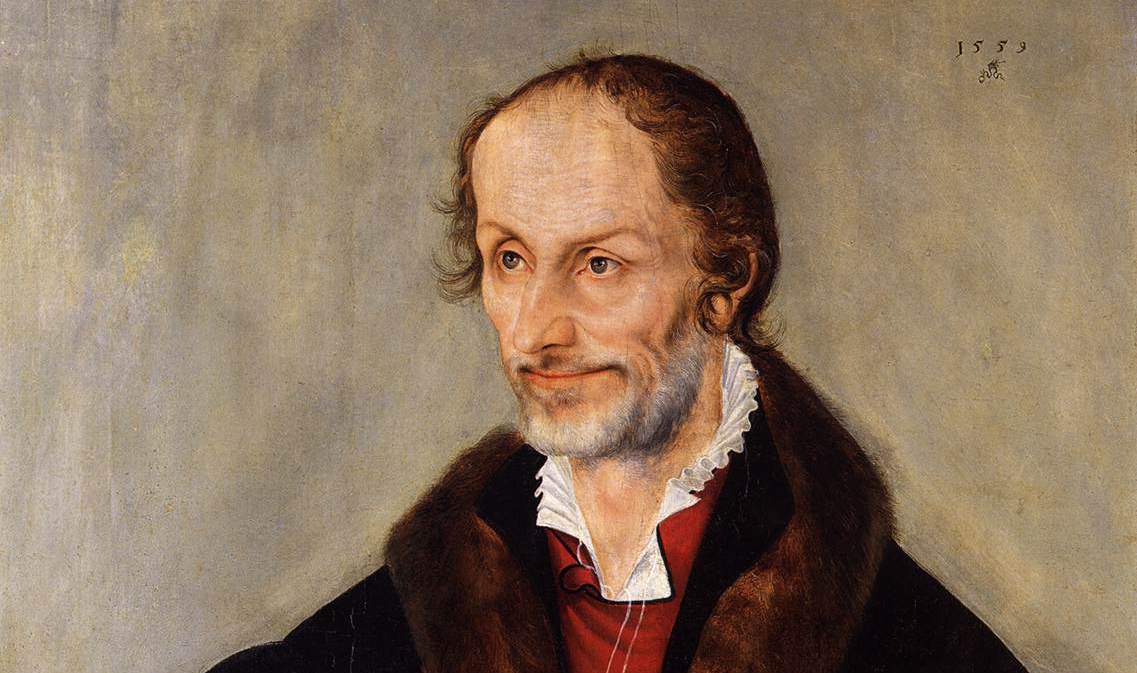It has become axiomatic in Reformation historiography to propose Martin Luther as a devoted student of the theology St. Augustine of Hippo, the great patristic opponent of the Manichees. This is not surprising, given how often Augustine was invoked by the Reformers against Catholic dogma. Protestant luminaries such as Calvin and Cornelius Jansen made a corrupted Augustinianism the center of their doctrines. And St. Augustine’s bold stance in favor of grace against the Pelagians made Augustine a valuable ally to Reformers arguing in favor of their novelties like sola fide and double-predestination. Recall, too, that Martin Luther himself was an Augustinian monk.
Contemporary scholarship, however, reveals quite a contrary picture of Luther. Far from invoking Augustine against Rome, Martin Luther shows himself disdainful of the great doctor of Hippo, and in fact an advocate of the dualist theology of the Manichees.
These developments first came to light in the early 20th century, when thousands of notes written by the hand of Luther himself were discovered in the margins of works by St. Augustine, Peter Lombard and others. These glosses came from two time periods, 1506-1516, and 1535-1545, and thus represent both the developing and the mature thought of Luther. The glosses were not systematically studied and compiled, however, until the mid-century, under the direction of a German Catholic priest Theobald Beer (1902-2000), one of the foremost scholars on Martin Luther whose 35 years of work on the arch-heresiarch of Protestantism won the esteem of Cardinal Ratzinger, Hans Urs von Balthasar, and many others. Beer’s painstaking years of systematizing and publishing these glosses of Luther became public in 1980 with the publication of Beer’s 584 page book Der fröhliche Wechsel und Streit.

Beer’s work shows a Luther not enamored with St. Augustine, but extraordinarily hostile to him. In fact, this hostility at times assumes a Gnostic tone, shedding light on many of Luther’s subsequent critiques of Aristotelianism and Scholasticism. Of Beer’s work, Cardinal Ratzinger wrote to the author, “The influence of neoplatonism, of pseudo-hermetical literature and of gnosis which you show was wielded on Luther, casts a totally new light on his polemics against Greek philosophy and Scholasticism. In a new, significant way you also explore, to the depths of the central point, the differences to be found in Christology and the doctrine of the Trinity” (1).
How could these important elements of Luther’s thought get lost? Theobald Beer points out that what we now know as “Lutheranism” is really the thinking of Luther’s successor, Philipp Melanchthon. Though he was Luther’s interpreter and advocate, Melanchthon nevertheless diverged from Luther on several important points. Unlike Luther, Melanchthon held the Church Fathers, especially Augustine, in a certain level of reverence, admitted the usefulness of philosophy in theological studies, and tended towards a certain rationalism that Luther found troubling. Melanchthon wielded these in the service of the Lutheran cause, serving to moderate the Lutheranism of the latter 16th century against some of Luther’s more extreme positions. It has often been stated that no modern day Lutheran would be caught dead in the water affirming some of the things Luther said. Melanchthon, is a fine example of this, who, after Luther’s death, said that Luther was paralyzed with a “Manichean delirium” (2). Thus the Lutheranism we know today is the thought of Luther as interpreted and modified by Melanchthon.

What of this “Manichaean delirium” that Melanchthon attributed to Luther? One example is Luther’s theology of the atonement, where he saw an essential inversion of the divine order. On the cross, “the devil must be granted an hour of divinity and I must attribute fiendishness to God” (3). Of course, Luther was really projecting his own struggle with God onto Christ, leaving the Son in a truly dualistic relation with God the Father. Luther’s deep-seated hatred for God is placed upon Christ, who assumes not only the punishment due to sin (Catholic theology), but also the very guilt of sin itself. Luther writes that Christ did not just assume a general human condition, but submitted to the devil. In a way He is in assent not only with the devil, but also the disposition to sin.
Christ as Compositum
In Luther’s glosses, he refers to Christ not as a person, but as a compositum, a “composition.” This is necessary, since he asserted that divinity and the diabolical are co-existing within Him; Christ is a composition of humanity and divinity. Here Luther is opposing the traditional concept of a single, personal hypostasis, which he will argue against his entire life. This was a huge point of divergence between Luther and Melanchthon. After Luther’s death, Melanchthon stated, “The formulas to be rejected are: ‘Christ is composed of two natures’ and ‘Christ is the fruit of creation.'” The former is obviously an attempt to move the Lutheran movement away from Luther’s compositum idea, enabling Lutheranism would maintain the the traditional formula of hypostasis. Here Luther was especially against Augustine, about which we will say more shortly.
Beer stresses that Luther fixated on the role of Christ to the exclusion of His identity: what Christ does is more important than who He is. For Luther, Christ has two functions. “The first,” says Theobald Beer, “is the function of shielding us from divine wrath and the second that of giving us an example. This is twofold justification.” (4) The human nature of Christ, because it adopts the sinful disposition of fallen man, in fact becomes sin. This is where a Gnostic-Manichaean dualism enters into Luther’s thought. There could be no reconciliation between sinful flesh and the divine nature. This is why for Luther Christ is compositum but not hypostasis.
This also goes to the root of the relationship between faith and works. Works, pertaining to the outer man, the “flesh”, can have no bearing or relevance to the “inner man”, the spirit animated by faith. Remember, even in grace, the flesh is still wicked; Christ has simply shielded the sinner from punishment. Thus there is a permanent dichotomy between faith and works. To this statement, the Catholic parties at the Diet of Augsburg would counter with St. Paul’s famous formula, “faith working through love” (Gal. 5:6), which of course teaches the union of faith and works and the merit of works done in faith. Luther never had a satisfactory explanation for these arguments, preferring a retreat to the Gnostic writings of Hermes Trismegistus to counter them. At Augusburg, for example, Luther responded to the citation from Galatians by saying:
“The relationship between God and man is like a line touched by a sphere; the sphere only ever meets the line at one point and it is at precisely this point that Christ is sited. We are always on the same path but the sphere only ever touches us at one point” (5).
This is taken directly from Hermes Trismegistus, who wrote, “God is an infinite sphere whose center is everywhere…God is a sphere with as many circumferences as there are points” (6). In one of the glosses on the Gospel of John, Luther commenting on Christ’s statement, “Before Abraham was, I am”, says, “This is what happens in all names regarding accident, but not substance. Christ did not say, ‘Before Abraham was, I am Christ’; He said simply, ‘I am.'” In other words, He introduces the distinction between substance and accident into the person of Christ, viewing the divinity in the compositum as the substance and the humanity as the accident. Elsewhere Luther says, “That which white represents in relation to man so is Christ in relation to the Son of God” (7). The humanity of Christ is not necessary to the person of Christ; it is merely accidental, which is why it can assume the fundamental disposition of sin without corrupting His divinity. This pushes Luther’s thinking perilously close to Gnostic dualism, if not over the edge completely.
This means that there is something fundamentally deeper to Luther’s objections to Catholicism besides the use of indulgences or other petty misunderstandings. Luther contradicted the very core of traditional Christology—a Christology that is accepted today by most Protestants as well as the Orthodox. One can only imagine how the Council of Trent would have reacted had they had these writings at their disposal. This appalling “Manichaean delirium” is why Melanchthon tried so hard to reshape Lutheranism in a mold more consonant with traditional Christology.
Luther and Augustine
Here we come to Luther’s disdain for St. Augustine, for it was Augustine, more than any other Father, who articulated the right understanding of Christ within the Trinity. In De Trinitate, Augustine wrote, “It was said that the Father invisible, united with the Son invisible with Him, sent that same son and rendered Him visible” (8). Writing in 1509, Luther scribbles sarcastically in the margins, “Look, what a strange conclusion!” Luther could not accept an inter-trinitarian mission because of Christ’s fundamental function as a shelter from divine wrath. Luther knew Christ has two natures, but viewed them in perpetually in opposition.
This opposition extends even to the Church. Because the human nature as such does not participate in the divine nature, neither does the Church. Luther wrote, “The Church is an exterior body but does not participate in the divine nature.” Melanchthon countered by dictating, “The person of Christ was sent to the Church to bring it the Gospel from the heart of the Eternal Father.” There is a true penetration of divinity into humanity in Melanchthon that Luther’s Manichaean outlook can never allow him to admit (9). Luther goes so far as to deny the human nature of Christ had any part in the redemption: “Christ works for our salvation, but without the cooperation of human nature” (10) Human nature is so irredeemably corrupt, so distant from divinity, that not even in the person of Christ can it be put to any good use. Christ’s only use for His humanity is to “become” our own sin.
Luther’s Gnosticism was deep seated; Beer cites many other places where Luther, in commenting on the Scriptures, cites Hermes Trismegistus, neo-pythagoraean teachings, and uses Gnostic imagery, like that of Leviathan or the Titans. He sees the fundamental division between faith and works as so deep-seated that there are essentially two of every person. In his 1531 gloss on Galatians, Luther wrote, “So one is the Abraham who believes, one is the Abraham who works, one is the Christ who redeems, one is the Christ who works…distinguish between these two things as between heaven and earth” (11). The dualism here is profound.
It is for this reason that Luther particularly scorned Augustine, who had written so eloquently against the Manichaeans of his own day. In Confessions, for example, where Augustine criticizes the concept of two divinities struggling with each other, Luther writes in the margin, “This is false. This is the origin of all Augustine’s errors.” Luther attacks Augustine for attacking Manichaeism; this is why Melanchthon in turn accused Luther of Manichaean delirium, precisely because the concept of two gods, of two Christs, emerges in Luther.
Another example: When Augustine attacks the Gnostic Porphyry in De Trinitate VII, 6, 11, Luther upholds Porphyry’s argument against Augustine, writing in the margin, “[The term] ‘person’ in God is a term common to many and signifies the substance of the divinity.” This is profoundly opposed to Augustine, who argued the orthodox position that person refers not to the substance of God, but to the distinctions within Him. If person referred to God’s substance, He would not be able to have a Trinitarian personhood, since He is but a single substance. It is appalling that Luther has been viewed as some sort of Augustinian. He despised Augustine and thought his work was riddled with errors. Luther sides with the Manichaeans over Augustine.
True, Luther does not posit an autonomous evil substance, as the Manichaeans did, but for him, God is fundamentally bad. When St. Paul wrote that in Christ the fullness of God dwells bodily (Col. 2:9), Luther writes, “It is good that we have such a man, because God in himself is cruel and bad” (12). This is reflective of Luther’s personal experience with God, which in turn spills over into his theology.
Conclusion
Theobald Beer’s work compiling Luther’s glosses reveal a Luther who from 1509 right into the 1540’s was convinced of a particularly heterodox Christological theory, one which even his own contemporaries were ashamed of and tried to downplay. His relegation of the human nature of Christ to practical irrelevance, his Gnostic dualism in the division he posits between man’s material and immaterial components, his reliance on the eremtical works of Hermes Trismegistus, and his rabid distaste for St. Augustine all reveal a Luther much more troubled and turned around than previously imagined. In his questioning of the very natures of Christ and the structure of the Trinity, Luther is more problematic than once thought, as his attacks on the faith come from a much more fundamental level than his quibbles with indulgences and purgatory.
And that being the case, where does this leave Lutheran-Catholic relations? Are Luther’s strange ideas something Catholics can dialogue with? Of course Luther is not Lutheranism, and most Lutherans today would be ashamed to profess Luther’s ideas as their own. Still, even if modern Lutheranism has distanced itself from Luther’s “Manichaean delirium”, it is nevertheless true that the manner in which a thing is started determines its course. Catholic scholars and all Catholics engaged in evangelical efforts or “dialogue” with Lutherans would do well to educate themselves on this hitherto unknown side of Martin Luther.
(1) 30 Days, No. 2, 1992, “Luther: Manichaean Delierium” by Antonio Socci and Tommaso Ricci, pg. 55
(2) ibid.
(3) ibid.
(4) ibid., 56
(5) ibid.
(6) Discourses of Hermes Trismegistus, II, XVIII
(7) Socci and Ricci, 56. “Sicut albus est respectu hominis, ita Christus respectu filii dei.”
(8) St. Augustine, De Trinitate, II, 5, 9
(9) Socci and Beer, 57
(10) ibid.
(11) ibid.
(12) ibid., 59
Phillip Campbell, “Glosses Reveal a Gnostic Luther,” Unam Sanctam Catholicam, August 25, 2013. Available online at: www.unamsanctamcatholicam.com/glosses-reveal-a-gnostic-luther

